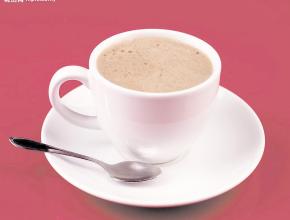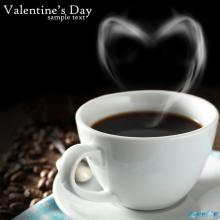Unique floral fragrance of Panamanian Erida Manor Coffee Flavor and Taste introduction to boutique Coffee
The Panamanian flag was adopted on November 3, 1904, and is rectangular in shape, with an aspect ratio of 3:2. The flag consists of four rectangles of white, red and blue. White symbolizes peace; red and blue represent the Liberal Party and Conservative Party of Panama, respectively, and are also symbols of the unity and struggle of the two parties for the interests of the nation. The blue star on the upper left represents loyalty and integrity, and the red star on the lower right represents the authority of the law. The design of the crosshairs divided into four sections represents Panama's location at the junction of South America, North America, the Atlantic Ocean and the Pacific Ocean. Red, blue and white are the colors of the United States Star Spangled Banner, which supports Panama's independence. This flag was designed by Manuel Amador Guerrero, the first President of Panama. The current Panamanian government was formed on July 1, 2009. The main members are: Vice-President Juan Carlos Barrera, Minister of the Presidency Jimmy Papadimiriou, Minister for Foreign Affairs Fernando Núñez Favre, Minister of the Interior Jorge Ricardo Favre, Minister of Public Security Jose Raul Murino, Minister of Economy and Finance Frank George de Lima, Minister of Industry and Commerce Ricardo Quijano, Minister of Agricultural Development Oscar Armando Osorio Casar, Minister of Health Javier Diaz, Housing Minister Yasmina Pimentel (female), Labor Minister Alma Lorena Cortez (female), Social Development Minister Guillermo Ferrufino, Education Minister Lucy Molinal (female), Public Works Minister Jaime Ford, Small and Medium-sized Enterprises Minister Cicero Brillo (female), Canal Minister Robert Roy, Tourism Minister Salomon Samar The overall economy is at a low level of development, with agriculture, forestry and fisheries accounting for the majority of people's livelihood. However, shipping-related enterprises and part of the financial and insurance industry have international status, resulting in a small number of extremely rich classes and a large gap between the rich and the poor. Panama is rich in forest resources and has many tropical tree species. Mahogany, cedar and teak are abundant in the east, providing a few internationally competitive exports. Farmers live on tropical cash crops such as bananas, pineapples, sugar cane and coffee. The industrial base is weak, there is no heavy industry, the manufacturing industry is mainly based on light industry such as agricultural and animal husbandry products processing industry and livelihood products industry, and some low-tech household appliances can be made by themselves.
Copper and gold deposits have large reserves, currently ranking the sixth largest copper mining country. In 2013, the output value of ore mining industry reached 430 million US dollars. The oil and natural gas reserves in the eastern strata have theoretically become the focus of international energy industry. For the general public, the only way to get out of the countryside is to engage in service industry in cities. The service output value reached 25.1 billion US dollars. Transportation, storage and tourism are the main sources of job opportunities. Panama's Gilang Port on the Atlantic coast (Including MIT, CCT and Cristobal) and Panama Balboa and PSA Panama ports on the Pacific coast, the container traffic volume ranks first and second among the major ports in Central and South America. Panama Canal traffic reached a record high of 87.7 million tons in Q1 FY2014
Panama's geographical advantage lies in the fact that it has many distinctive microclimates suitable for coffee cultivation, and Panama also has many dedicated and professional coffee growers. This means that Panama has a lot of very good coffee, but this coffee is often associated with high prices.
The high coffee prices in Panama are mainly caused by the following factors:
Land Price: For the people of North America, they are very eager to buy a stable and beautiful land at a cheap price. Panama is one such place;
More panamanian farmers export coffee under the name of estates to emphasize their own estates; while commodity prices are still relatively low, the panamanian boutique coffee association organizes a competition called "best panama": coffee beans from different parts of panama are ranked and auctioned online. Esmeralda Estate has been growing a coffee called Geisha for many years, and this auction makes their coffee known to more people. From 2004 to 2007, they won the competition for four consecutive years, then won it again in 2009, 2010 and 2013. It continued to break records until it was priced at $21/lb in 2004, then rose to $170/lb in 2010. In 2013, a small portion of that sun-treated coffee was sold for $350.25/lb. No one questioned that this was the highest price ever paid for a single estate coffee.

Important Notice :
前街咖啡 FrontStreet Coffee has moved to new addredd:
FrontStreet Coffee Address: 315,Donghua East Road,GuangZhou
Tel:020 38364473
- Prev

Introduction to the flavor and taste of Panamanian Caesar Louis Manor Coffee with fruit flavor and floral flavor
Panama is located in the isthmus of Panama in Central America, bordered by Colombia to the east, the Pacific Ocean to the south, the map of Panama to Costa Rica to the west and the Caribbean Sea to the north. The territory is S-shaped to connect North and South America, and the Panama Canal connects the Atlantic and Pacific oceans from north to south. It is known as the bridge of the world. [5] Panama has a land area of 75517 square kilometers.
- Next

Unique floral fragrance of Panamanian Erida Manor Coffee Flavor and Taste introduction to boutique Coffee
The Panamanian flag was launched on November 3, 1904. The flag is rectangular and the ratio of length to width is 3:2. The flag consists of four rectangles of white, red and blue. White symbolizes peace; red and blue represent the former Panamanian Liberal Party and the Conservative Party respectively, and they are also symbols of the two parties' United struggle for the interests of the nation. The blue star on the white background on the upper left represents loyalty and integrity, and the red star on the white background on the lower right represents
Related
- Does Rose Summer choose Blue, Green or Red? Detailed explanation of Rose Summer Coffee plots and Classification in Panamanian Jade Manor
- What is the difference between the origin, producing area, processing plant, cooperative and manor of coffee beans?
- How fine does the espresso powder fit? how to grind the espresso?
- Sca coffee roasting degree color card coffee roasting degree 8 roasting color values what do you mean?
- The practice of lattes: how to make lattes at home
- Introduction to Indonesian Fine Coffee beans-- Java Coffee producing area of Indonesian Arabica Coffee
- How much will the flavor of light and medium roasted rose summer be expressed? What baking level is rose summer suitable for?
- Introduction to the characteristics of washing, sun-drying or wet-planing coffee commonly used in Mantenin, Indonesia
- Price characteristics of Arabica Coffee Bean Starbucks introduction to Manning Coffee Bean Taste producing area Variety Manor
- What is the authentic Yega flavor? What are the flavor characteristics of the really excellent Yejasuffi coffee beans?

